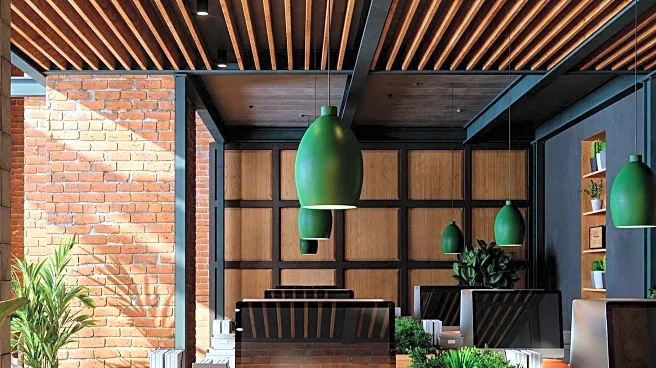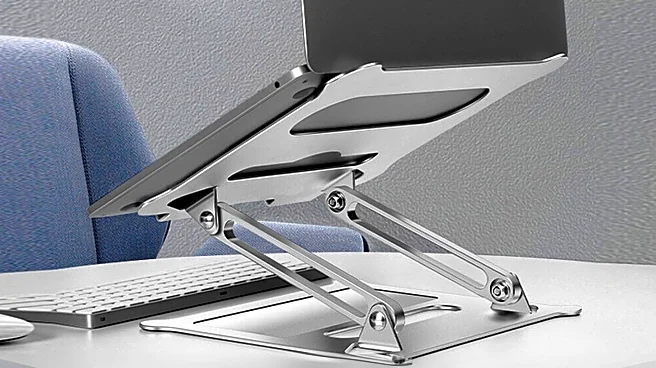What's Happening?
The modern workplace is undergoing a transformation that emphasizes the integration of wellness principles into workspace design. Vista Spaces, led by Managing Director Raghuveer Veeramachaneni, is at the forefront of this shift, advocating for environments that prioritize human comfort, focus, and restoration. The approach includes biophilic design elements such as natural light, organic materials, and indoor greenery to improve mood and productivity. Human-centered design features adjustable desks and ergonomic furniture to reduce physical strain and support mental clarity. The inclusion of well-being zones, quiet rooms, and wellness spaces for activities like yoga and guided breathing further enhances the workplace environment. These changes aim to create spaces that support life beyond traditional work hours, offering amenities like child-friendly zones and on-site grocery stores to accommodate modern living.
Why It's Important?
The shift towards wellness-centric workspace design reflects a growing recognition of the intrinsic link between environment and employee well-being. By prioritizing comfort and restoration, companies can foster a healthier and more resilient workforce, which in turn can lead to increased productivity and job satisfaction. This approach also addresses the blurring boundaries between professional and personal life, offering support for working parents and reducing daily routine friction. As organizations adapt to hybrid and high-performance cultures, creating spaces that nurture human potential becomes crucial for maintaining competitive advantage and attracting top talent.
What's Next?
As more organizations embrace wellness-centric design, the trend is likely to expand, influencing broader industry standards and practices. Companies may increasingly invest in infrastructure that supports employee well-being, potentially leading to collaborations with wellness experts and architects specializing in human-centered design. The focus on creating living, breathing communities within workplaces could drive innovation in office amenities and services, further blurring the lines between work and personal life. Stakeholders, including business leaders and employees, may advocate for policies that support these initiatives, emphasizing the long-term benefits of a healthier workforce.
Beyond the Headlines
The integration of wellness principles into workspace design raises ethical considerations about employee rights and the responsibility of employers to provide supportive environments. It also highlights cultural shifts towards valuing mental health and work-life balance, challenging traditional notions of productivity. As these designs become more prevalent, they may influence broader societal attitudes towards work and well-being, potentially leading to legislative changes that mandate wellness standards in workplaces.










